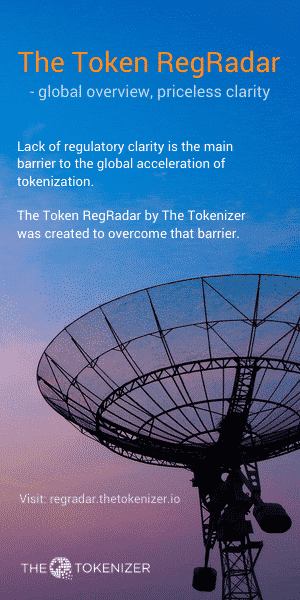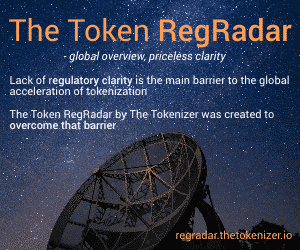Introducing the next level of tokenization of private placement securities
As the industry of tokenization rapidly evolves, the complexity increases and new challenges of tokenizing real-world assets emerge. Fully realising the potential of liquidity increase is one of those challenges that New York-based Factora addresses by introducing structured finance solutions through a digital infrastructure layer between the primary and the secondary market.
In their ambition to take tokenization of securities to the next level Factora even integrated the stablecoin Dai in their latest real estate deal in Brooklyn allowing investors the option to both pay and receive interest via Dai.
In November 2018, Factora[1] was the first company to tokenize a piece of real estate in Manhattan. It was a luxury East Village condo with 12 units and a total appraisal of $36 million, and the project was based partly on a structural framework written by CEO Todd Lippiatt together with the co-founder of Airswap, Michael Oved.
Representing the full capital stack
The framework – The Two Token Waterfall – introduces two separate tokens to reflect and represent the full capital stack of a real estate investment project: “One (token) senior in priority of payments replicating debt and the other (token) junior in priority of payments replicating equity.”
The main goal of the framework and the two tokens is to “bring structured finance to the blockchain ecosystem in a compliant manner”[2] and to better release the huge potential of increasing liquidity by tokenizing real estate securities and other classes of real-world assets in private placements.
The Tokenizer had a talk with Lippiatt and asked him to elaborate further and to explain how this framework and Factora’s approach differs from what is already being done by the growing number of token issuance platforms and other tokenization services companies in the industry. Lippiatt explains:

Towards increased liquidity
“The initial movers in the space usually speak about the complexity of the compliance protocols. And how wrapping a digital compliance layer around the ownership interest of things will result in liquidity. Yes, that is one component of it. But we believe that it falls far short of what the technology can offer in terms of solutions to what we think are very well known liquidity issues in the marketplace. In broad brush strokes, we are upgrading financial infrastructure by refactoring real-world assets into the token economy. Standardization and normalization of these bespoke asset classes into a digestible form will lead to transparency and ultimately to liquidity. All this means that at the end of the day we will have lower expenses and lower costs of funds for the ultimate investor.”
“An easy example is this: I traded a fair amount of illiquid securities when I worked on Wall Street and finding somebody that was eligible to buy was never the issue. But finding someone that understood it; went through the analysis; had a clear look and a simple way to evaluate it; that was a lot harder. And so, the ideology is, if from a structural framework at the token level you can lay out, what we would say is a very clear picture on what the capitalization and what the components are, that would either add or detract from the value of the actual piece that this token represents. We think that does a lot more to level the playing field or the asymmetry of information that typically exists in these types of private placement securities.”
Moving beyond compliance
Lippiatt emphasizes that compliance regarding investors and ownership is important, but he also points out that Factora’s platform is compliance protocol agnostic and that it is important to move beyond compliance:
“We have our own compliance protocol, and regulatory compliance and adherence to the legal agreements are being codified into the smart contracts. But we’re also agnostic when it comes to compliance protocols. There are a bunch of different companies already with relatively valid solutions, and we don’t really care as long as it functions in the way it needs to for the servicing and administration of the token to take place.”
Lippiatt further stresses that while most of the well-known tokenization platforms in the space – like Polymath, Harbor, TrustToken and Securitize – are focusing primarily on assisting companies who want to do tokenized placements, Factora has a slightly different focus:
“We will do some placements too, and we have the ability to. But it’s not really where we’re focusing our efforts. We’re looking more at developing an infrastructure layer between the primary and the secondary markets by which we facilitate token creation, token trading, as well as the servicing and administrative layers of the token economy. From what I’ve been told, there is no deep security or securitization experience at the other firms in the space. And we think that Factora has a very extensive structured finance background. Myself included – having worked in the industry for quite a fair portion of my career, the perspectives are a lot different than the theoretical.”
Brooklyn deal introducing new innovations
Lippiatt describes Factora’s first tokenization project in Manhattan as “an interesting deal, but fairly generic,” and he is clearly more excited about the most recent deal which is a real estate development project called FACTOR-805. It is a 37-unit residential condo in Brooklyn, and as Lippiatt puts it, in terms of utilizing the potential of blockchain and tokenization it is “a couple of evolutions beyond” the project in Manhattan.
The ‘evolutions’ concern at least two aspects of the new project. One is that the way the structural framework is representing the full capital stack through tokens has become more advanced, introducing debt tranches as described in the second half of the framework whitepaper.
“The second deal really differentiates us and our framework going forward. What we did this time was that we tranched the debt token and laid out a couple of different ways for debt to be tranched. And with a senior subordinate debt tranche of which we sold off the subordinate piece.”
What this means is that instead of having two tokens in the deal – a debt token and an equity token— the Brooklyn deal used two debt tokens by introducing another, representing a senior subordinate debt tranche. This new structural layer further defines the picture of the capital stack, increases transparency, and offers more options for the investors – all with the purpose of increasing liquidity.[3]
Integration with Dai
The other innovative aspect of the Brooklyn deal is the fact that for the first time ever, a real estate investment project integrates the Dai stablecoin, which is developed and issued by MakerDAO. Lippiatt explains what the Dai integration means for the investors:
“As an investor, you can purchase in Dai, and you can even have interest paid in Dai. This has never been done before.”
He further emphasizes that what the stablecoin Dai potentially can do is automate investment payments and “streamline the back end of these transactions, which are typically slow and costly.”[4]
Founder and CEO of MakerDAO, Rune Christensen, said about the integration of Dai in the FACTOR-805 Brookly deal:
“FACTOR-805is a breakthrough. It’s a powerful example of how to unlock
more value from investments by bringing real-world assets to the blockchain.
With Dai, investors get the speed, security and efficiency of a cryptocurrency
without the volatility that typically defines the space.”
[1]Fluidity Factora was still two separate companies – Fluidity and Propellr – at that time.
[2] https://framework.factora.io/#/Two-Token-Waterfall
[3] In the conclusion of the second chapter of The Two Token Waterfall, it says: “As adoption of tokenizing real world assets grows and structures become more nuanced, tokenization of the full capital stack — and transparency — is paramount. With each token of each discrete tranche represented and publicly available along with payment history and outstanding obligations, significant information asymmetry is removed. Additionally, this is a vital step forward in identifying and normalizing risk parameters in the token economy. Not all loans are equal.”
[4] https://medium.com/fluidity/factor-805-introducing-dai-into-security-tokens-a02a98f69cd9
You Might also Like















